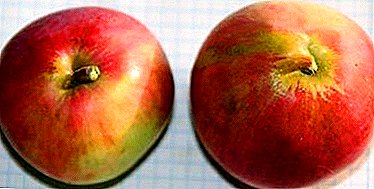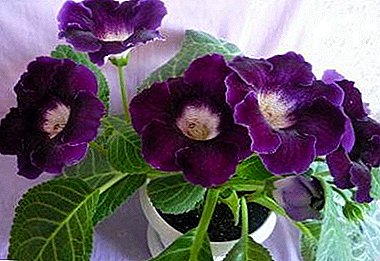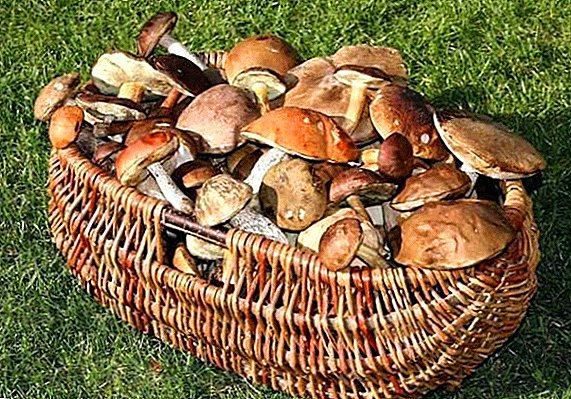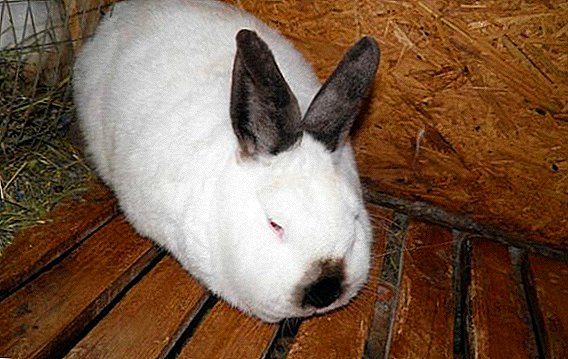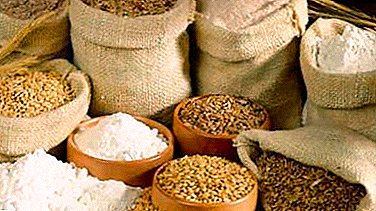 Everyone has long known that sea buckthorn has incredibly useful properties. It has been grown for several centuries specifically for the manufacture of a variety of therapeutic sea buckthorn oils, tinctures, and everyone can tell about the extraordinary taste of tea from this berry. In addition, the bushes of plants have a pretty nice tidy look and can be a good decoration for the estate. Not so long ago, a very close relative of sea-buckthorn, Shepherdia, was brought from North America. The plant, called red sea buckthorn, is in no way inferior to the usual sea buckthorn, which we are used to, but it looks even prettier and is well suited for use in landscape design.
Everyone has long known that sea buckthorn has incredibly useful properties. It has been grown for several centuries specifically for the manufacture of a variety of therapeutic sea buckthorn oils, tinctures, and everyone can tell about the extraordinary taste of tea from this berry. In addition, the bushes of plants have a pretty nice tidy look and can be a good decoration for the estate. Not so long ago, a very close relative of sea-buckthorn, Shepherdia, was brought from North America. The plant, called red sea buckthorn, is in no way inferior to the usual sea buckthorn, which we are used to, but it looks even prettier and is well suited for use in landscape design.
Description and photo
Sheferdia it is accepted to call one of the three genera of the family Lokhov. In this family actually includes another sucker and the sea buckthorn itself. Shepherdia is a small prickly or not prickly bushes, which height reaches 4 meters. This dioecious plant, the genus of which experienced gardeners have learned to distinguish by flower buds. In men's bushes they are round and large, and in women - sharp and small.  The plant has small oblong leaves up to 7 centimeters long with fine fluff. It blooms before the leaves themselves bloom in the second half of April, the inflorescences are small and yellow.
The plant has small oblong leaves up to 7 centimeters long with fine fluff. It blooms before the leaves themselves bloom in the second half of April, the inflorescences are small and yellow.
Did you know? In the people, the sea buckthorn foreigner has more than 20 names, the most popular is the "bull berry", since beef is usually consumed with Shepherd's jelly.
The plant begins to bear fruit in the second year of life. The fruit of Shepherdia are round berries of a rich red color with white dots, the diameter of the fruit reaches 0.5-1.5 centimeters. These berries are edible for humans and animals, they are terribly fond of birds. It tastes sour with a slight bitterness and very tart. They ripen by the end of August.
Learn more about the variety and cultivation of sea buckthorn, as well as the fight against plant diseases and pests.
Types and varieties
According to "The Plant List", the plant has three types:
- Canadian Shepherd - not a very common tree in our latitudes, this is due to the fact that its yellow-red berries are completely tasteless. It is extremely rarely found purely as a decorative component of the landscape.
- Round leaf - tall shrub covered with unusually dark green leaves of rounded shape. The branches of the plant during the ripening of the fruit are almost at the very ground. These trees are distributed exclusively in Colorado due to the lack of frost resistance.
- Shepherdia Silver - the most popular deciduous species that can be found around the world. Due to the pubescence, the branches of the plant really seem silvery-white. Shepherd fruits can be red or bright yellow-orange with a pronounced taste.



Important! Doctors warn that the fruits of Shepherdia silver can not be consumed in large quantities, because the berries contain tetrahydrogarmol, which has the property to influence the psychological state of a person by changing the mood.
Growing conditions
Shepherdia silver good suitable for European climatetherefore, it can be safely chosen as a fruitful and decorative inhabitant of the dacha plot. It is frost-resistant, resistant to drought, plant diseases and undemanding to care, gets on well with other trees, herbs and flowers.
Location and lighting
In general, the plant will adapt to the planting site quickly. It is worth considering that the "bull berry" loves the sunny side. If the American sea buckthorn receives enough light and heat, it will “thank” you for sure, as this will contribute to bright abundant blooms, and later the harvest will be better and sweeter.
A strong wind and even a draft will not affect the tree. In addition, if it is reasonable to plant a shrub on the plot, it will protect the estate from wind gusts, making the place quiet, comfortable and secluded. 
Soil requirements
For proper cultivation and effective further care for Shepherdia, it is worth taking care of suitable soil content. The plant can inhabit different soil compositions: stony, sandy and even saline lands. The soil must be loose so that the roots can be enriched with oxygen and other nutrients. It is desirable that the earth was fruitful, so the chances of growing a beautiful tree are much higher.
Read also about the cultivation and application of traditional medicine sucker silver.
Seedling planting scheme
Planting American sea buckthorn is very simple. It is better to do this in spring (in April), in order for the young plant to settle down well and get stronger before the onset of winter cold.
Consider the step-by-step instructions for planting bull berries:
- Choose a quality seedling at the age of 1-1.5 years.
- We dig a hole, the depth of which is up to 40 centimeters.
- We add sand there to the soil to be softer, as well as fertilizer (the presence of these components together with the earth should be in a ratio of 1: 1: 1).
- Carefully remove the seedling from the container so as not to disturb the root system of the plant.
- Immerse Shepherd in a hole and sprinkle with soil.
- From above, we do not water the tree too much.
 Saplings are recommended to be placed at a distance of 20-40 centimeters from each other. After planting Shepherdia its most important part of care will be its hydration. Watering young saplings of the American sea buckthorn is recommended regularly twice a week and for at least three months from the moment of planting. A sufficient amount of water will have a good effect on the growth and development of the shrub.
Saplings are recommended to be placed at a distance of 20-40 centimeters from each other. After planting Shepherdia its most important part of care will be its hydration. Watering young saplings of the American sea buckthorn is recommended regularly twice a week and for at least three months from the moment of planting. A sufficient amount of water will have a good effect on the growth and development of the shrub.We advise you to read about the beneficial properties of gumi berries (many-flowered suckers), as well as how to grow shrubs in the country.
Breeding methods
Successful reproduction of silver shepherdia is possible, as with other plants, by seed and vegetatively. The main thing is to approach this matter responsibly and do it right.
Seeds
Seed reproduction - the most time consuming and long way. In this case, the first color and fruits of the "berry berry" will please not soon - in 4-5 years. Despite this, seeds are an effective form of reproduction, and he deserves the right to exist. The algorithm is as follows:
- in October / November, pits up to 3 centimeters deep are open in the open field;
- seeds are laid in these grooves and sprinkled with soil;
- for a cold period, the landing site is covered with snow.

Vegetative methods
Vegetative breeding methods of the American sea buckthorn are several. This is the detachment of root processes and, of course, grafting.
The first type is that in the third year of Shepherdia’s life, she has a root offspring located at a distance of 2 meters from the main shrub and can be separated from the mother tree. Such small plants are planted in the same way as ordinary seedlings.
The second species is probably the most popular breeding method, which has a significant advantage. The cutting is good because when you choose it, you can immediately distinguish the male plant from the female. This is a very significant factor in gardening.
Propagation by cuttings is as follows:
- Early spring choose green cuttings with 2-4 buds up to 15 centimeters in length;
- neatly cut off these branches;
- put the cuttings in a solution of the biostimulating substance for a day;
- the next day, they make indentations up to 4 centimeters in the sandy-peat soil and plant cuttings there;
- from above it is better to insulate the soil with foil;
- By mid-autumn, young shrubs will already be well developed and ready for transplanting to a permanent place.

Rules for the care of "red sea buckthorn"
Caring for the American sea buckthorn consists in watering, loosening the soil, fertilizing and pruning the tree.
"Adult" trees can be watered, but not necessarily. Typically, shepherdie enough natural moisture, in additional watering the plant needs only a hot dry time.
Loosening the soil and getting rid of weeds is very important for sea buckthorn foreigners. It should be made once every two months.
Important! Be extremely careful when loosening the soil, so as not to damage the bull's root system, this is a very vulnerable part of the shrub that is close to the surface.
Fertilize the plant can be once a year, making minerals rich in calcium, magnesium, like regular trees.
The plant must be cut for its accuracy and attractiveness. This process depends on your desires and fantasies. In order to make the harvest easier, you can limit the growth of the crown of the bush to 2 meters. This will not affect its fertility and development. Pruning is still needed so that the branches are not too heavy and do not lie on the ground. American sea buckthorn does not require insulation for the winter.
Landscape Design and Shepherdia
Silver Shefferdia - the favorite of many designers. The unusual shade of foliage and abundant colorful berry frame will make any place colorful. Low-growing shrubs are good for creating the background of the landscape area.  Shepherdia is perfect for live fences that have been a trend in landscape design for many years. This will give a cozy home, give a drop of Provence. "French Country" can be harmoniously complemented by small shrub rose bushes, the blooming of which, together with Sheferdia, will create a bright aristocratic ensemble. Experiment!
Shepherdia is perfect for live fences that have been a trend in landscape design for many years. This will give a cozy home, give a drop of Provence. "French Country" can be harmoniously complemented by small shrub rose bushes, the blooming of which, together with Sheferdia, will create a bright aristocratic ensemble. Experiment!
Did you know? Canadian scientists have found substances in Shepherdia that prevent vision loss. Soon will become available preparations based on "bull berries", which will differ in low price due to the prevalence of this shrub.
Few of the beneficial properties
The plant in official medicine has not yet found its application, but is widely used in the people for the prevention and treatment catarrhal and viral diseases.
Berries can be consumed both fresh and dried. It is a source of minerals. American sea buckthorn fruits are rich in nutrients: glucose, ascorbic acid, pectins, vitamins A and E, carotene.
It is believed that regular, but in moderation, the use of American berries can improve immunity, improve the functioning of the cardiovascular system, the liver.
Sea buckthorn foreigner is another way to add variety to your garden and diet.


